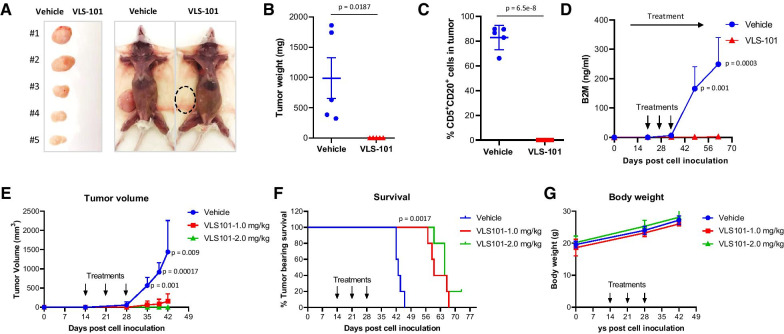Fig. 2.
VLS-101 is potent in targeting ROR1-expressing PDX models with dual resistance to ibrutinib and CAR T. A PDX model was established from one of the ibrutinib-CAR T dual resistant MCL patient in immunodeficient NSG mice. (a–d) Freshly isolated PDX cells from previous generation were inoculated subcutaneously into NSG mice. When tumors became palpable (at day 20 post cell inoculation), the mice (n = 5) were treated intravenously (IV) with vehicle (n = 5) or VLS-101 (n = 5) at 2.5 mg/kg (QW × 3). When the tumors in the vehicle groups reached 15 mm in diameter, the subcutaneous tumors were dissected, imaged (a) and weighted (b). The percentage of MCL cells in the subcutaneous tumors were detected by flow cytometry with fluorescence conjugated CD5 and CD20 antibodies (c). B2M levels were detected by B2M ELISA kits using the mouse serum collected every two weeks (d). (e–g) The same model was used to pass on to the next generation and the mice were treated with VLS-101 at lower doses 1 and 2 mg/kg (QW × 3, IV) (n = 5 per group) when tumors were palpable (at day 14 post cell inoculation). Tumor volume (e), mice survival (f), and body weight (g) were monitored and plotted. We used the 15 mm tumor size as humane end points for animal survival analysis. Student t test was used to calculate statistical significance

